

The Crimson Medinilla bud in the top photo will soon burgeon into the colorful clump of flowers in the lower photo.
Posted for Becky’s Squares: Move Forward, Reconstruct, Renew, and/or are Burgeoning. See more responses here.



The Crimson Medinilla bud in the top photo will soon burgeon into the colorful clump of flowers in the lower photo.
Posted for Becky’s Squares: Move Forward, Reconstruct, Renew, and/or are Burgeoning. See more responses here.

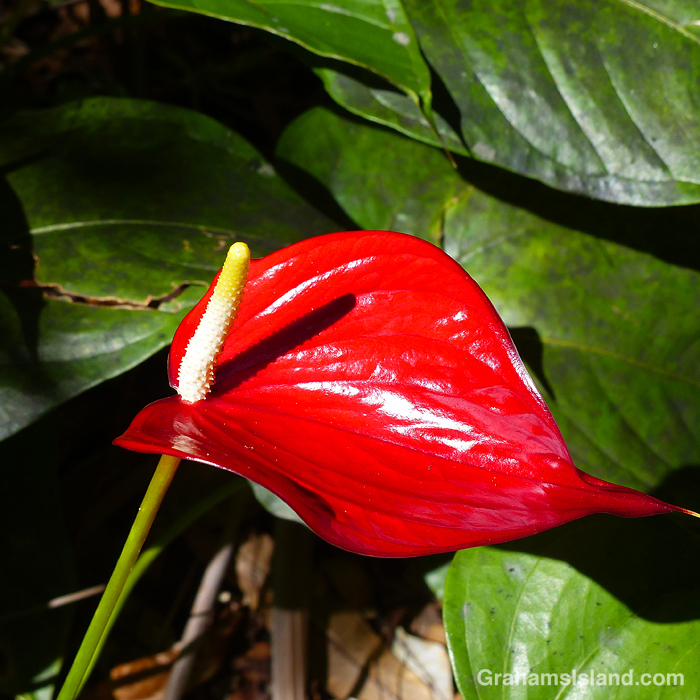
This week’s Sunday Stills challenge theme is ‘April Flowers.’ See more responses here.
Looking through my files, I found a dearth of flower photos taken in April, except for one visit to Hawai’i Tropical Bioreserve & Garden a couple of years ago. These photos are from that visit.

Some ‘flowers’ aren’t flowers at all. These are the bracts of the plants, which are far more showy than the small flowers that emerge from them later.

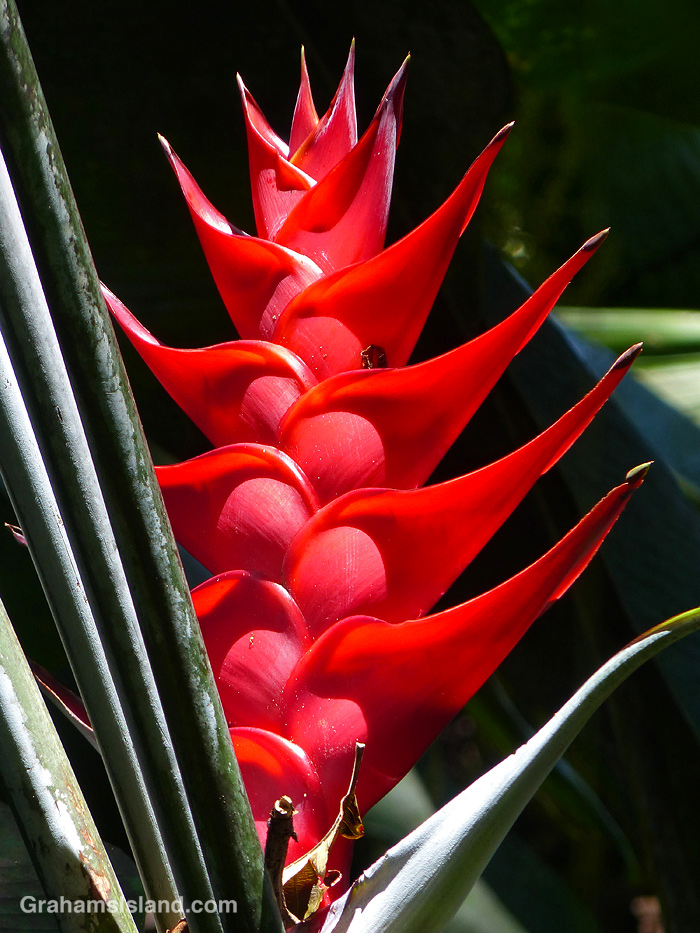
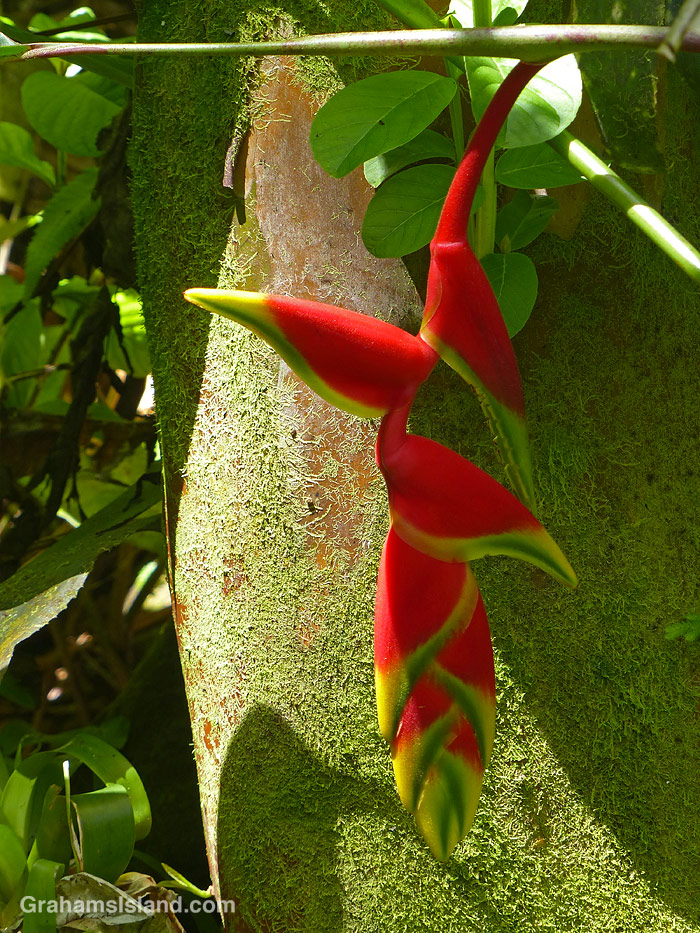
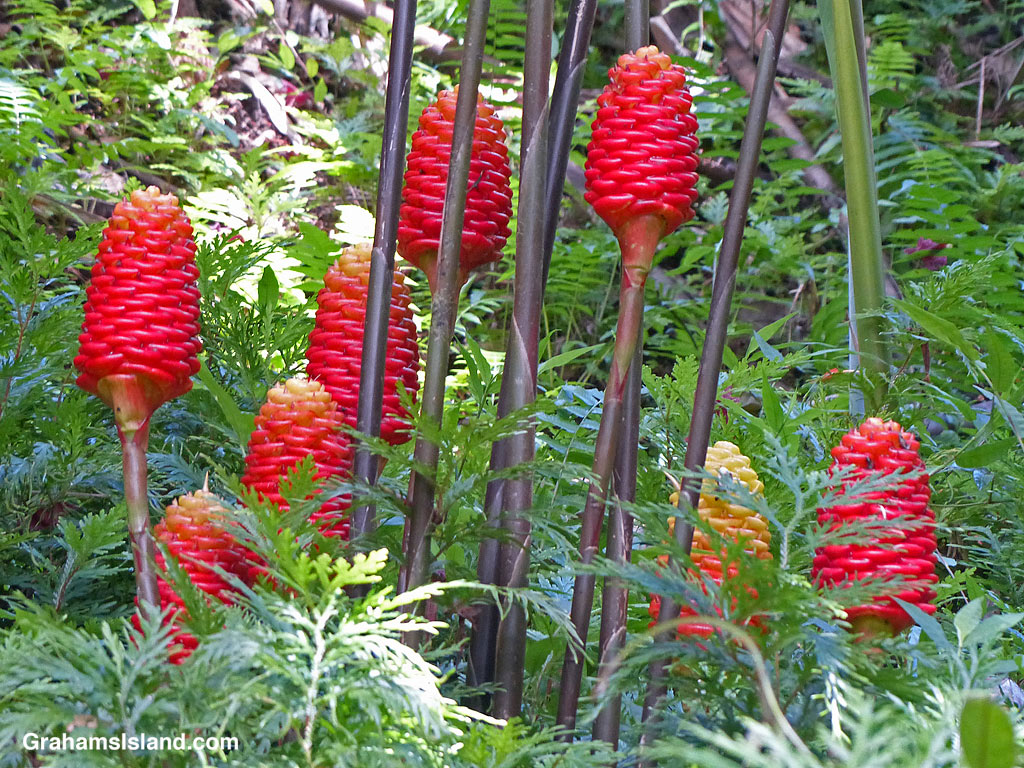
For more information about Hawai’i Tropical Bioreserve & Garden, go to htbg.com.


Tropical Milkweed (Asclepias curassavica) is an introduced species here. It’s become popular in part because milkweeds are food for butterflies, including Monarch Butterflies, whose numbers have been falling for some time. However, there are questions about whether planting Tropical Milkweed is a good or bad thing.
One concern is that Tropical Milkweed’s perennial habit might be disrupting the Monarch’s epic migrations. Another concern is that the plant hosts Oe (Ophryocystis elektroscirrha), a parasite that adversely infects butterflies, and that is passed down to subsequent generations. This parasite is more prevalent in non-migratory butterflies such as those in Hawaii, but it’s not clear whether Hawaii’s population is suffering in the same way as some of those on the mainland. Hawaii’s Monarchs primarily use Crown Flowers to lay their eggs.
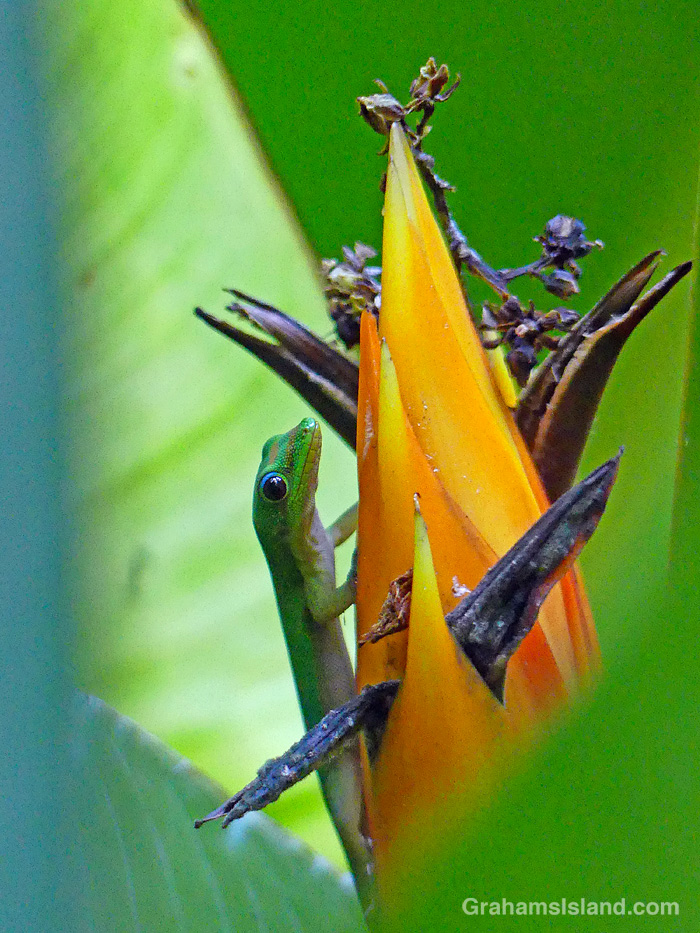
I spotted this Gold Dust Day Gecko deep in a clump of heliconias at Hawai’i Tropical Bioreserve & Garden.

I don’t know what kind of palm this is, so I don’t know if this is what the trunk is supposed to look like or if this is something growing on it. I’ve been digging around on the internet, but haven’t found the answer yet. Any ideas?

I sometimes think orchids don’t look real but, to use a line from Seinfeld, they’re real and they’re spectacular!
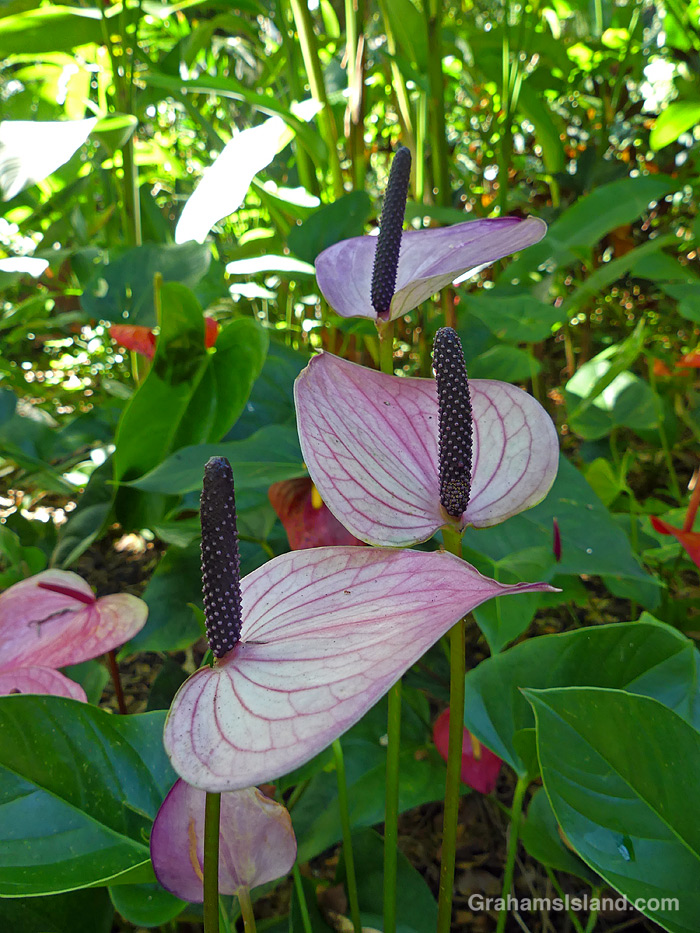
Ok, so there are actually several more anthuriums in the photo, but I liked how these three looked like they were dancing with each other.
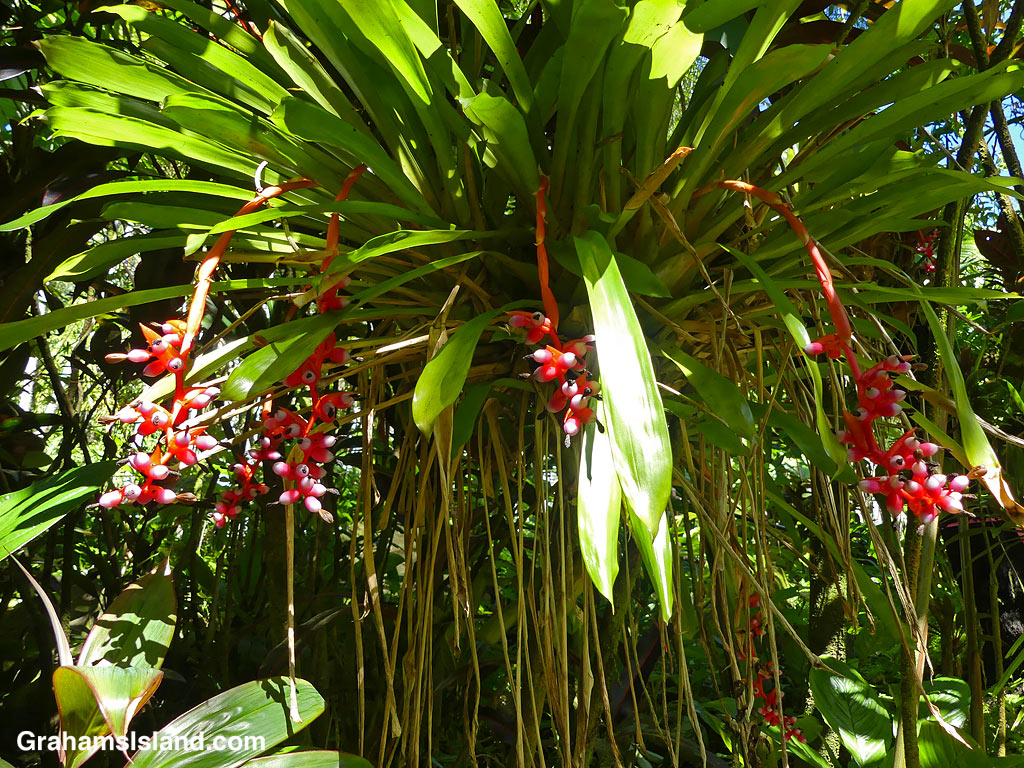

Every time I visit Hawaii Tropical Bioreserve and Garden, I see something new. On my last visit, one of new things I saw was this Miracle Fruit (Synsepalum dulcificum). The plant hails from tropical Africa. It gets its name from its berry. Without getting into too much chemistry, if this berry is eaten, sour foods eaten after it will taste sweet!
There were no berries on this plant, but perhaps I’ll see them next time I visit. Perhaps I’ll nick one and see how this works!